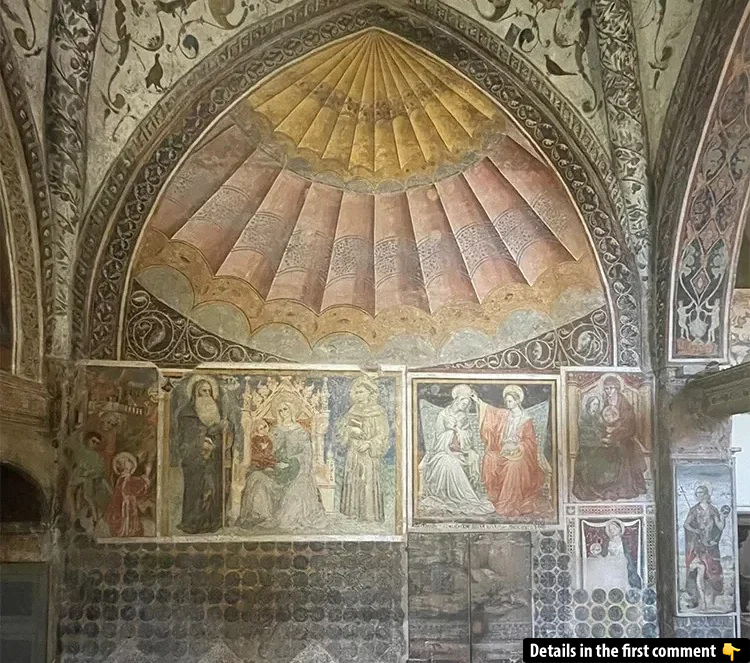The discovery of a 13th-century fresco in Ferrara, Italy, has provided a rare and valuable glimpse into the medieval Christian world, revealing a fascinating and little-known practice: the use of Islamic-inspired tents to conceal high altars in Christian churches. This fresco, which had been hidden beneath layers of paint for centuries, is now regarded as one of the most significant findings in art history, highlighting the deep cultural exchanges between the Islamic and Christian worlds during the Middle Ages.
The Unlikely Fusion of Islamic and Christian Art
The fresco, uncovered in the Church of St. Antonio in Polesine, Ferrara, depicts a tent-like structure draped around the apse walls of the church, adorned with intricate eight-pointed star motifs and pseudo-Arabic inscriptions. The artist’s attention to detail is remarkable, creating the illusion of a luxurious, bejeweled canopy. This discovery sheds light on how the Christian church embraced Islamic influences, despite the cultural and religious divide between the two worlds.
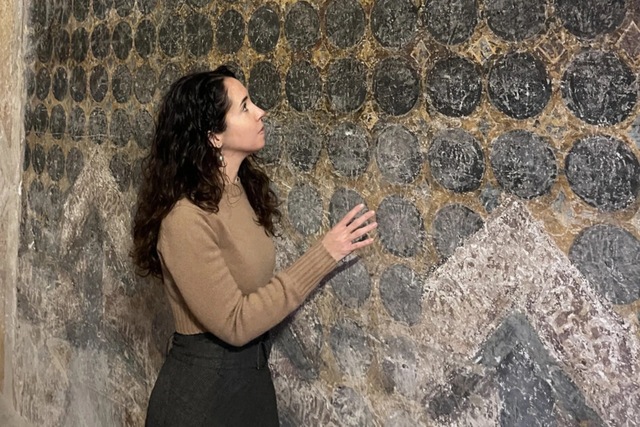
What makes this fresco particularly striking is the use of Islamic textiles within the Christian context. According to historian Federica Gigante from Cambridge University, the fresco is a visual representation of a real Islamic tent that may have been present in the church at the time. The tent, adorned with jewels and vibrant colors, may have been a diplomatic gift from a Muslim leader or even a trophy seized from the battlefield. In her research, Gigante posits that a high-profile figure, possibly Pope Innocent IV, could have donated the tent, supporting the theory with historical records of the Pope’s generosity in gifting exquisite textiles to the Benedictine convent in Ferrara.
Video
Check out this video to uncover how a 13th-century Italian fresco reveals the medieval church’s use of Islamic altar tents, shedding light on cultural exchanges.
Islamic Influence in Christian Rituals
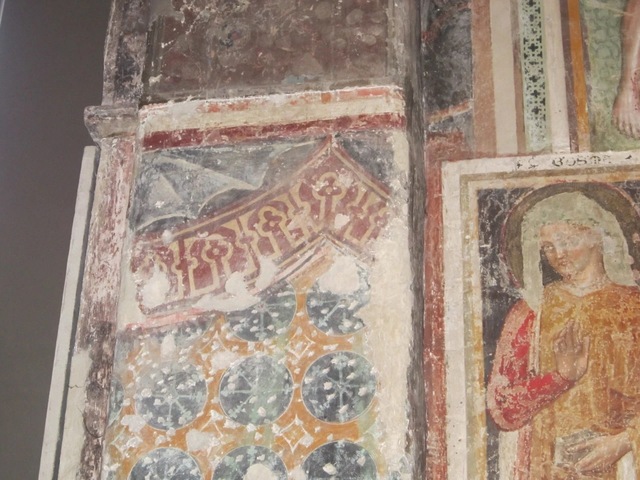
The use of Islamic textiles in Christian rituals was not a new practice but rather an ongoing tradition. Islamic textiles were highly prized in medieval Europe, often brought back by pilgrims and crusaders from the Holy Land. These textiles, regarded as symbols of divine heritage, were incorporated into Christian rituals, even though their Islamic origins were not always understood. The discovery of this fresco highlights how Christian worship, particularly the celebration of Mass, was influenced by Islamic art and design, reflecting the complex interactions between the two cultures.
Gigante’s research reveals that the fresco’s depiction of a tent-like canopy may have been a direct reference to an actual tent used in the church. In medieval Christian churches, textiles were often used to conceal altars, either permanently or during specific liturgical periods. Gigante’s investigation found that the fresco’s meticulous rendering of folds and textile details suggests that the artist may have seen and been inspired by a real Islamic tent in the church. The presence of nails and brackets embedded in the apse walls further supports the idea that the tent was a physical object, possibly serving as an altar curtain or tetravela.
A Masterpiece Hidden for Centuries
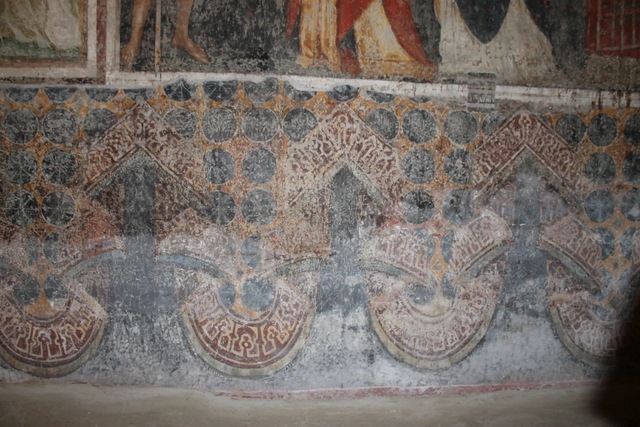
The fresco itself is a work of artistic mastery, capturing the opulence of the Islamic world while blending it with the Christian iconography of the time. The drapery in the fresco is painted in hues of gold and blue, creating an otherworldly atmosphere that transports viewers to a space that feels both sacred and luxurious. The celestial blue sky in the background, adorned with stars and birds, evokes the idea of an outdoor tent, further enhancing the illusion of a grand canopy over the high altar.
However, the fresco was not fully appreciated until recently. In the early 15th century, portions of the fresco were covered with scenes depicting the lives of the Virgin Mary and Jesus Christ, drawing the attention of art historians to these later additions while the original fresco remained largely ignored. It was only when Gigante revisited the church a decade ago that she uncovered the true significance of the hidden fresco, which has since been identified as a rare depiction of Islamic influence on Christian ritual.
The Role of Islamic Tents as Spoils of War
Islamic textiles, including tents, were highly coveted during the Middle Ages and often found their way into Christian churches as spoils of war. Tents, in particular, were symbols of royal authority in the Islamic world and were often displayed in churches as a form of victory trophy. Gigante’s research suggests that the tent depicted in the fresco may have been one of these prized possessions, possibly given to the church as a diplomatic gesture or acquired through military conquest.
The historical context of the 13th century, a time of military campaigns and territorial expansion, makes the presence of such Islamic artifacts in Christian settings even more intriguing. Tents, banners, and other spoils of war were often displayed in churches to demonstrate power and dominance, further cementing the complex relationship between the Christian and Islamic worlds during this period. Gigante’s findings suggest that the fresco’s depiction of an Islamic tent may have been a visual representation of this exchange, demonstrating the medieval church’s appreciation for the splendor and craftsmanship of the Islamic world.
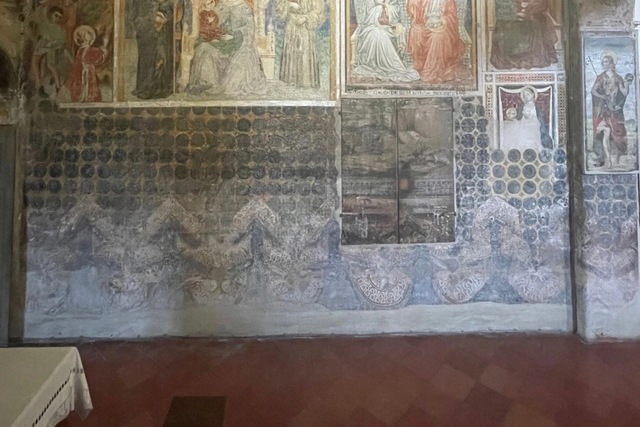
A Symbol of Cultural Exchange and Diplomacy
The rediscovery of this fresco offers a unique perspective on the cultural exchanges between the Christian and Islamic worlds during the medieval period. Gigante’s research highlights how Islamic art and textiles were incorporated into Christian rituals, even if their origins were not fully understood by medieval Europeans. This blending of cultures, through the use of Islamic-inspired tents in Christian churches, speaks to the broader theme of cultural diplomacy and exchange that characterized the Middle Ages.
Gigante’s work also emphasizes the role of powerful figures, such as Pope Innocent IV and the Este family, in facilitating these exchanges. The donation of luxurious textiles, including Islamic tents, may have been part of a broader diplomatic strategy to maintain peace and strengthen alliances between Christian and Muslim rulers. The fresco in Ferrara stands as a testament to the enduring legacy of these diplomatic efforts and the complex relationships between different cultures during the medieval period.
Video
Watch this video to discover how Christianity played a key role in dividing the Roman Empire, exploring its impact on history and the Colosseum.
Conclusion: A Rediscovery that Challenges Historical Narratives
The rediscovery of this 13th-century fresco in Ferrara has not only illuminated a fascinating aspect of medieval Christian worship but also challenged our understanding of cultural interactions between Christianity and Islam. The fresco’s depiction of an Islamic-inspired tent as part of Christian rituals offers a rare and valuable insight into the medieval world, shedding light on the ways in which different cultures influenced each other.
This find underscores the importance of ongoing research and scholarship in uncovering hidden aspects of history. By revisiting overlooked artworks and examining them through new lenses, historians like Federica Gigante are rewriting the narrative of medieval Europe, revealing a more nuanced and interconnected world than previously imagined. The fresco in the Church of St. Antonio in Ferrara is not only a masterpiece of medieval art but also a symbol of the cultural exchanges that have shaped our shared history.
